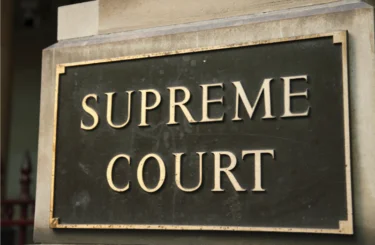
Attention: Stop Falling Into the “Comcast Problem” Class Action Trap
Busy lawyers look for shortcuts, and sometimes they take those shortcuts at their own peril. Today, too many plaintiff class action lawyers are falling prey to the “Comcast Problem” argument. If they’d simply read the case, they would realize the opinion didn’t change the existing class certification standards and, more importantly, it has very limited applicability to almost all of our cases. Class counsel should read the Comcast decision before engaging defense counsel in a debate over proving damages on a class-wide basis or they may end up short-changing themselves and the class they seek to help.
The Comcast Case is not A Typical Class Case
Class action attorneys should understand that Comcast was an antitrust case in which plaintiffs sued Comcast over a strategy to monopolize territories, like Philadelphia. Comcast would purchase smaller cable TV competitors, but the purchase would involve Comcast trading its customers from a different market, like Florida, for the smaller company’s customers in target territory, i.e. Philadelphia. By doing this trade repeatedly, over time Comcast engineered a monopoly in the territory. Comcast’s strategy, called a “clustering scheme,” harmed subscribers in the Philadelphia cluster by eliminating competition and holding prices for cable services above competitive levels. It was a straightforward Sherman Act antitrust case – illegal contracts designed to restrain and monopolize trade and commerce.
Now, an antitrust case involves a key distinction form many other cases; it requires proof of an “antitrust injury.” Antitrust injury requires plaintiff to establish a link between the antirust conduct, a detrimental effect on the market, and economic damage to plaintiff, all within the context of the type of injury antitrust laws are intended to prevent in preserving competition. This is where most class actions fundamentally differ from Comcast, and why class action lawyers fall prey to the Comcast trap.
In Comcast, Plaintiff’s expert performed a regression analysis of multiple factors to demonstrate that the Comcast monopoly raised prices. The regression analysis incorporated, in part, four harmful aspects of Comcast’s strategy that plaintiffs alleged to be antitrust violations, including (1) Comcast’s clustering made it profitable for Comcast to withhold local sports programming from its competitors, resulting in decreased market penetration by direct broadcast satellite providers; (2) Comcast’s activities reduced the level of competition from “over builders,” companies that build competing cable networks in areas where an incumbent cable company already operates; (3) Comcast reduced the level of “benchmark” competition on which cable customers rely to compare prices; and (4) clustering increased Comcast’s bargaining power relative to content providers. Plaintiffs alleged that each of these forms of impact increased cable subscription rates throughout the Philadelphia DMA, increasing Comcast’s market share of subscribers from 23.9 percent in 1998 to 69.5 percent in 2007.
The Comcast Rule 23(b)(3) Ruling
Now comes the Rule 23 issue. The District Court accepted the overbuilder theory of antitrust impact as capable of class wide proof and rejected the other three. Accordingly, Plaintiffs’ proof of antitrust impact was limited to “the theory that Comcast engaged in anticompetitive clustering conduct, the effect of which was to deter the entry of overbuilders in the Philadelphia DMA.” And the problem for plaintiffs was their expert used a model that could not be limited to just that theory, but instead, was based on all four. And there is the true Comcast problem.
What defense lawyers try to peddle as the Comcast problem is found in these 13 words of the Comcast decision, so often taken out of context: “Questions of individual damage calculations will inevitably overwhelm questions common to the class.” But the full paragraph puts those 13 words in context. It becomes abundantly clear that the true class certification problem was based on the uniquely complex “antirust injury” element of an antitrust case, a complexity most class actions do not involve.
Respondents’ class action was improperly certified under Rule 23(b)(3). By refusing to entertain arguments against respondents’ damages model that bore on the propriety of class certification, simply because those arguments would also be pertinent to the merits determination, the Court of Appeals ran afoul of our precedents requiring precisely that inquiry. And it is clear that, under the proper standard for evaluating certification, respondents’ model falls far short of establishing that damages are capable of measurement on a classwide basis. Without presenting another methodology, respondents cannot show Rule 23(b)(3) predominance: Questions of individual damage calculations will inevitably overwhelm questions common to the class. This case thus turns on the straightforward application of class-certification principles; it provides no occasion for the dissent’s extended discussion, post, at ___ – ___, 185 L. Ed. 2d, at 527-530 (Ginsburg and Breyer, JJ., dissenting), of substantive antitrust law.
Don’t Get Trapped
The trap to avoid is allowing defense counsel to argue that Comcast changed the class certification standards in some material manner. This includes arguments that Rule 23(a) is now harder than before Comcast. Another argument is that Comcast overturned cases allowing courts to bifurcate liability from damages. Yet another argument is all damages must be proven at the time of class certification, or be the same damages for all class members. None of these arguments are accurate.
First, the Court expressly addressed Rule 23(a) and (b)(3) standards. It reconfirmed the longstanding view that the standard of proof for Rule 23(b)(3) was higher than Rule 23(a) by citing Amchem.[1] It announced nothing new when citing Falcon and reminding trial courts to conduct a rigorous analysis that may involve some overlap with the merits when deciding class certification motions.[2]
Second, the Court’s Rule 23 analysis was housed within the world of antitrust cases. Take for example this explanation as to what proof of damages is necessary.
Calculations need not be exact, see Story Parchment Co. v. Paterson Parchment Paper Co., 282 U.S. 555, 563, 51 S. Ct. 248, 75 L. Ed. 544 (1931), but at the class-certification stage (as at trial), any model supporting a “plaintiff’s damages case must be consistent with its liability case, particularly with respect to the alleged anticompetitive effect of the violation.” ABA Section of Antitrust Law, Proving Antitrust Damages: Legal and Economic Issues 57, 62 (2d ed. 2010); see, e.g., Image Tech. Servs. v. Eastman Kodak Co., 125 F.3d 1195, 1224 (CA9 1997).
The Court could not have been clearer that it was dealing with “anticompetitive” injury and “effect”. It relied on antitrust case law and an ABA Antitrust Section article.
Lastly, the Supreme Court recently denied certification in a case where defendant tried to apply Comcast rule to defeat class certification. Butler v. Sears, Roebuck & Co., 702 F.3d 359 (7th Cir. 2012)(cert den February 24, 2014). This confirms that the Court’s damage model ruling in Comcast was limited to the specific problem in that case, and was not a new approach to Rule 23 class certification analysis. Addressing defendants’ argument, Seventh Circuit Judge Richard A. Posner wrote:
It would drive a stake through the heart of the class action device, in cases in which damages were sought rather than an injunction or a declaratory judgment, to require that every member of the class have identical damages. Id at 362.
In conclusion, plaintiff class action lawyers are making a big mistake to fall prey to a “Comcast Problem” when it does not exist. Comcast didn’t change the existing class certification standards for almost all of our cases. Class certification doesn’t require all class members to have the same damages.
[1] “If anything, Rule 23(b)(3)’s predominance criterion is even more demanding than Rule 23(a).” Amchem Products, Inc. v. Windsor, 521 U.S. 591, 623-624, 117 S. Ct. 2231, 138 L. Ed. 2d 689 (1997)).
[2] General Telephone Co. of Southwest v. Falcon, 457 U.S. 147, 160-161, 102 S. Ct. 2364, 72 L. Ed. 2d 740 (1982)).
Jason J. Thompson
Jason Thompson is a nationally board certified trial attorney and co-chairs Sommers Schwartz’s Complex Litigation Department. He has a formidable breadth of litigation experience, including class action and multidistrict litigation (MDL), and practices nationwide in both state and federal courts.





